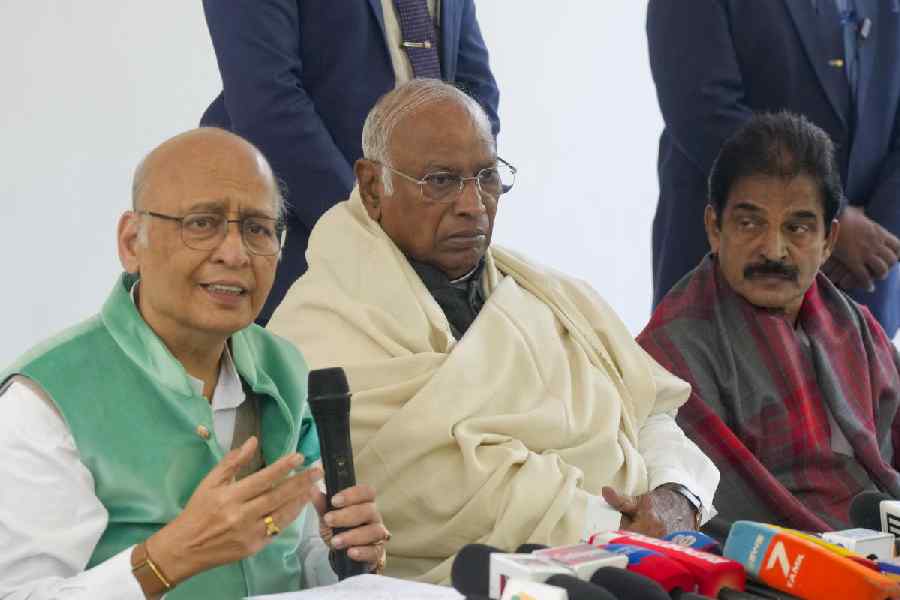.jpg)
Suniel Abujam remembers the mandatory 20-hour bus journeys he had to suffer as a student travelling from Guwahati to his village near Imphal during the holidays. That was 10 years ago; Abujam was studying at the Cotton College in Guwahati, and going home or returning was an odyssey. The bus climbed steep gradients and lurched down hairpin bends. A stopover (at Dimapur) later, one had to board another bus. There wasn't an option. Imphal did not have a rail link then. Flight services were infrequent, expensive.
The ardour of journeying into the Northeast can partly be blamed on its tough topography. Hills and turbulent river systems ensure travelling from one part to another can take unending hours. But air travel is changing that. "If one were to travel from Guwahati to Agartala by road, it would take 14 to 15 hours. The same distance takes 40 minutes by flight," says Raju Ranjan Gogoi, a Guwahati-based aviation entrepreneur and founder of Radiant NE Aviation & Travel Support, which provides ground handling and air charter services. Similarly, if one were to travel from Agartala to Mizoram, it would take a good 16 to 17 hours, if not more, to cover the 490-kilometre distance. But one cannot fly directly to Agartala from Mizoram. One has to fly to Guwahati and from there, take another flight to Agartala. Bus or train services between Agartala and Mizoram still don't exist.
"The condition of roads in the Northeast is horrible, and it gets worse during the monsoon. Landslides occur. In some places, roads get washed away," says Abujam.
And it is not just travel within the Northeast that is impeded. The region's connectivity with the rest of the country is also naturally restricted. "The Northeast is connected with the rest of India through a narrow 22-kilometre corridor known as chicken's neck in Siliguri, West Bengal, through which road and rail lines pass. This, severely limits expansion of rail and road links to the Northeast from other parts of the country," says V.P. Agrawal, former chairman, Airports Authority of India Ltd.
Over the years, things have not changed much on the ground. But they have in the skies. Nowadays, Abujam travels by air. It takes 50 minutes.
A slew of airlines has of late turned northeastwards. Recently, the central government launched the regional air connectivity scheme called Ude Desh Ka Aam Nagrik. "The idea is to get those who wear hawai chappals on to hawai jahaj (aeroplanes)," said Jayant Sinha, minister of state for civil aviation. The first flight under the scheme will take off in January.
And things are sure to look up further, believes Agrawal, with the new government policy providing financial support to fund airlines' losses on "un-served" routes. This includes tax incentives to operate on uneconomic routes and make air travel cheaper by capping ticket rates for short-span flights - 30-minute air journeys now have a cap of Rs 1,500 and one-hour ones, Rs 2,500.
P.K.H. Singh, who advises the North East Council (NEC) on transport, says: "We have been encouraging airlines to fly to the Northeast by providing viability gap funding... We are also in talks with some regional airlines which operate small aircraft, and are renovating unused airstrips in the region such as Barapani near Shillong and Teju in Arunachal Pradesh."
The initiatives are bearing fruit. A private airline, which faced financial upheaval in the recent past, has unveiled plans for a series of flights to the Northeast from October end. "We will use our fleet of Bombardier Q400 aircraft to launch flights in Silchar (Assam), Aizawl (the capital of Mizoram), and Gorakhpur (in eastern Uttar Pradesh)," says the company spokesman.
The low-cost carrier has added four new flights on the Calcutta-Silchar-Guwahati, Calcutta-Aizawl-Guwahati and Calcutta-Gorakhpur-Delhi routes and is exploring new markets like Dibrugarh, Lakhimpur (to cater to Arunachal Pradesh) and Jorhat. "We are also exploring direct international connections from Guwahati. We are open to making Guwahati a hub in the Northeast," says the spokesperson.
Aviation experts believe making Guwahati a hub will help link the region with other state capitals. "Airlines will be able to save a lot of time and cost. Currently, there are no facilities in Guwahati or elsewhere in the Northeast for overnight halt of aircraft. So they have to fly back to Calcutta or Delhi," says Gogoi of Radiant.
The national carrier, which was till recently the only lifeline of people in the Northeast, has also announced enhanced operations in the region from this month. It has introduced an A-319 aircraft (144 seater) on the Calcutta-Agartala-Calcutta, Calcutta-Silchar-Calcutta, Calcutta-Dimapur-Dibrugarh-Calcutta, Calcutta-Aizawl-Imphal-Calcutta, Calcutta-Aizawl-Imphal-Calcutta sectors. It also plans to operate the Northeast sectors with a brand new ATR (72 seater) and an A-319 or A-320.
"ATR 72-seater aircraft has an advantage since it can run on smaller runways. As most of the airports in the Northeast are small, we can operate these types of aircraft," says the spokesperson. "Also, since most airlines flying to the Northeast do not operate to their full capacity, running smaller aircraft will help them save cost and improve intra-region connectivity," says Kanu Gohain, former director-general of civil aviation.
The NEC, recently, entered into an agreement with a little-known aviation firm to provide connectivity to airports at Umroi (Ri Bhoi district, Meghalaya), Lilabari (Lakhimpur district, Assam), Tezpur (Sonitpur district, Assam), Imphal (Manipur) and Silchar (Cachar district, Assam) from Guwahati and Calcutta. The airline will operate its fleet of Embraer 145, an all-weather 50-seater twin-jet aircraft, from 2017.
Yet another profit-making low-cost carrier has just introduced a direct flight between Dibrugarh and New Delhi and another between Dimapur and New Delhi.
But the motives of the airlines are not entirely altruistic. "We believe the next wave of growth for the Indian aviation industry is going to come from small-town airports," says the corporate affairs manager of the airlines that had hit a financial air pocket recently.
Abujam couldn't care what other motives may be involved. He is thrilled for how convenient travelling home has become. Not only does he have a set of wings, there is also new wind beneath them.
Travel Troubles
.jpg)
Getting around the Northeast is an ordeal. Here’s why
Air
• Only two airports, Guwahati and Imphal, in the Northeast have connectivity with the rest of the country
Rail
• Hilly terrain has come in the way of rail network expansion
• Absence of railway network between different Northeast states
• Assam is the only state with a decent rail network, but it is not broad gauge in many parts
• Mizoram appeared on the railway map only this year
Road
• Uneven, hilly topography, inclement weather and poorly-maintained roads make the going tough. And ever so often, bandh-politics adds to commuter travails

.jpg)








